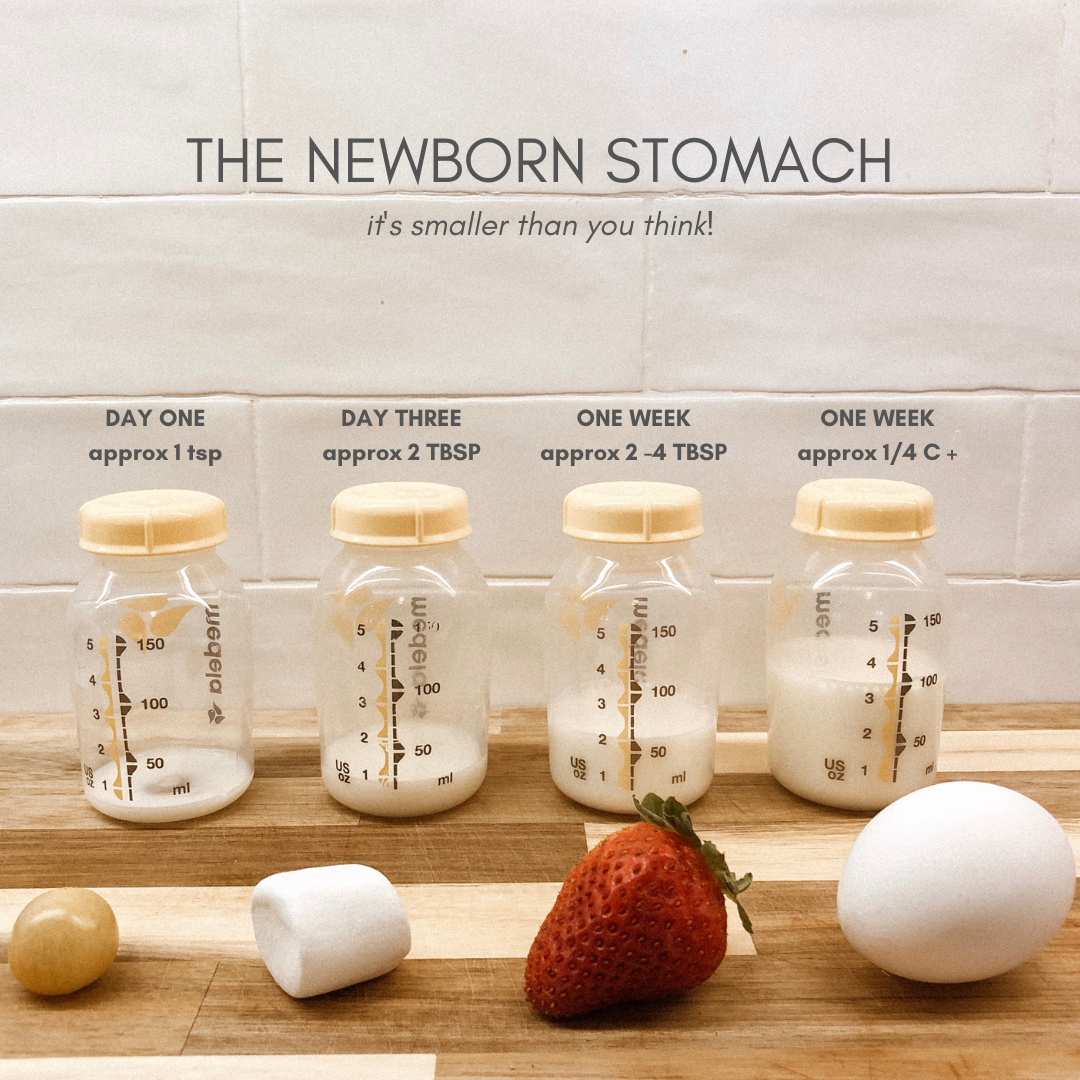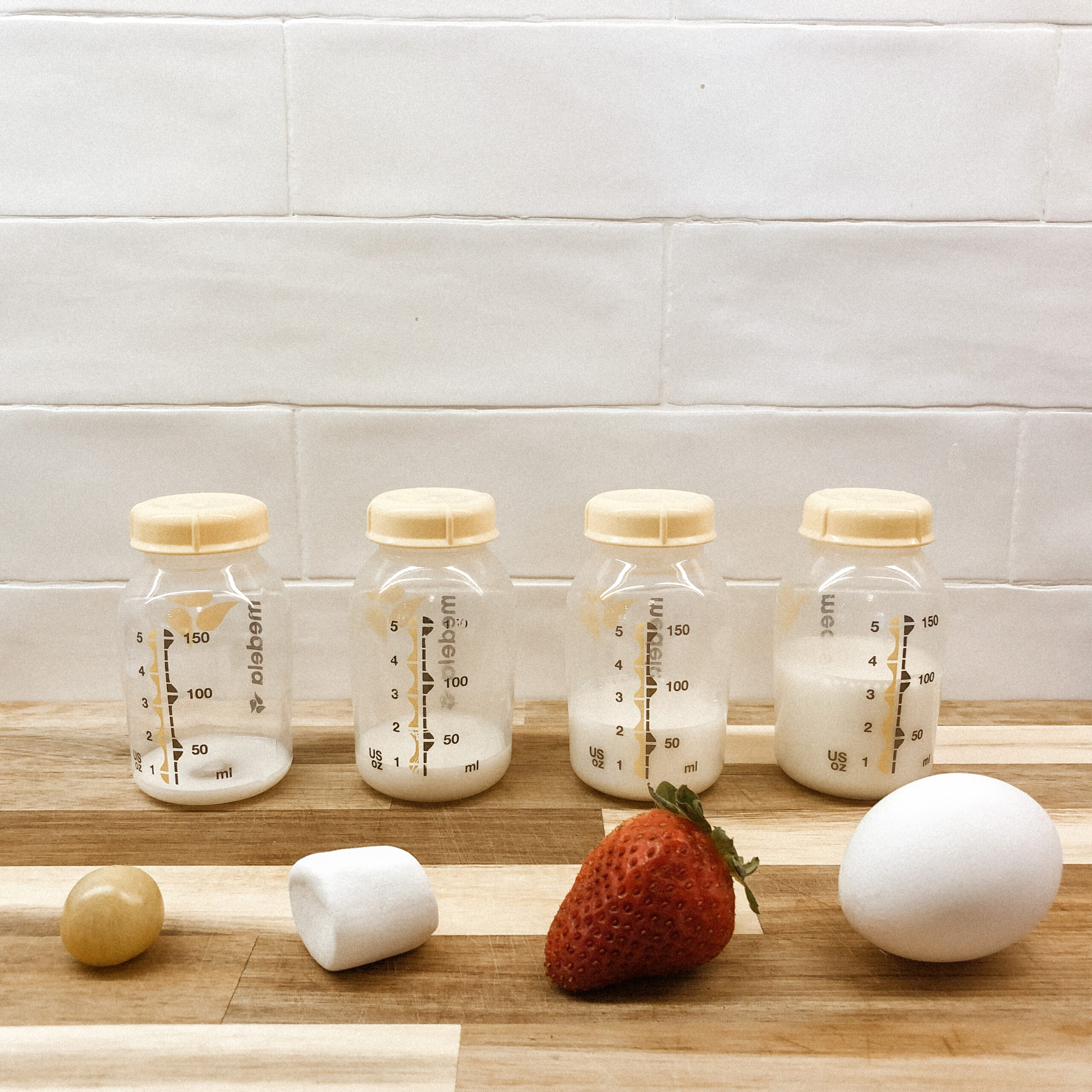After assisting countless women give birth, as well as being the mama in the bed at my own births, I feel that I can say with almost 100% certainty that the question of “Is my baby getting enough to eat?” dominates the thought of nearly every mama of every newborn.

Who is The Labor Mama and Why Am I Here?
Hey friend! I’m Lo – also known around here and social media as The Labor Mama. I’ve spent my nursing career in labor, delivery, and postpartum, have birthed 3 of my own babies, have labored thousands of mamas at the bedside, have taught hundreds of students online, and have even delivered a few speedy little babies with my bare hands (oops).
Here at TLM, I offer online birth classes to empower you the way everyone should be. The education + support I offer gives you experience, evidence, and empathy; you’re getting all of my years of “clinical” RN knowledge, beautifully combined with my real experiences as a mama and a nurse. These are not your hospital birth classes (those won’t do it, I promise), and honestly, birth doesn’t follow a textbook or protocol anyway – you need to know so much more than that.
If you want to connect with me further, head to Instagram. There are hundreds of thousands of us over there learning together daily.
Common newborn breastfeeding questions
Those first few days, the newborn and breast milk system, beautiful though it is, doesn’t always appear to be working in the right ways. So much feels unknown and unseen, as we latch a baby onto our breast and hope that something is working right. Colostrum, which we know to be so valuable, comes out in minuscule amounts. Breastmilk, the only sustenance for a mama who chooses not to supplement, may take days (or up to a week) to come in. And even the most veteran of mamas usually feels some angst as she wonders:
– “Are we breastfeeding right?”
– “Are they actually getting anything?”
– “Is this a good latch?”
– “Is this the right amount of formula?”
– “Are they crying because they are hungry?”
While these questions and concerns are normal growing pains for all mamas, there is also some helpful information about the newborn stomach that so few of us know – but all of us should! Though it often seems nearly impossible, most babies are getting enough, even while we wait for our milk to come in.
How big is the stomach of a newborn?
I want you to soak these numbers in. Let the visuals below reassure you. The newborn stomach is so much smaller than so many of us realize. And if we can both learn and trust this information, we may just find ourselves significantly reassured through that first month of newborn feeding (and hopefully, well beyond).
Like every other part of a newborn, the stomach is also growing throughout their first few months. A lot of women (and providers) find it helpful to think of the stomach size as different fruits, veggies, or foods. These images are so much more relatable and memorable. On day one, the stomach is often said to be the size of a cherry or cherry tomato. On day three, the stomach is comparable to the size of a walnut or a marshmallow. By one week the stomach is comparable to an apricot or a strawberry, and by one month, the stomach size is most often compared to an egg.

Here’s a table of the actual volume of breastmilk or formula a newborn stomach can (should) hold. Pay attention mama! It starts off so tiny!
| Timeline | Volume in Metric Units | Volume in Customary Units |
| Day One | 5-7 ml | approx. 1 tsp |
| Day Three | 22-25 ml | approx. 1 TBSP |
| One Week | 45-60 ml | approx. 2—4 TBSP (up to ¼ C) |
| One Month | 80-150 ml | approx. ¼ C – ½ C |
Here’s a few quick conversions between metric and customary units to help some of these numbers feel more familiar:
– 1 tsp = 5 ml
– 3 tsp = 15 ml
– 3 tsp = 1 TBSP
– 2 TBSP = 1 ounce (oz)
– 1 oz = 30 ml- 4 TBSP = ¼ C

Tips for feeding a newborn in the first week
I want you to think about how it all translates to what you are seeing and doing those first few days and weeks with your baby, especially as it relates to nursing, supplementing, and/or pumping. And I want you to be encouraged!
– In the first couple days, hand expression is a common practice to help mamas get colostrum out of their breasts. Typically, the volume that comes out is a few milliliters. That seems small, until you recall that is all their stomachs can hold!
– Mamas who are supplementing with breastmilk and/or formula often have a tendency to overfeed. A standard premixed bottle of newborn formula has 60 mls in it. Some babies will drink it all – but they are promptly going to throw it up. That is much more than they need in a feed!
– Many of us start pumping early to help our milk come in. It can be discouraging to see less than an ounce in the bottom of that bottle. But mama, look at that picture. There is hardly any milk in that bottle. But, that one ounce is 30 ml – more than enough for those early days.
The takeaway on the size of the newborn stomach
Without question, the newborn days are full of so many highs and lows and successes and failures. But when mamas know and understand these numbers, a lot of the angst around both breastfeeding and supplementing can likely be minimized. Both our bodies and our babies’ bodies are doing amazing things those first few days. And more often than not, these systems are working together in a beautiful harmony.
Often, the first part of our jobs as mamas is to educate and inform ourselves about our choices, our options, and the many different possibilities and scenarios we may encounter. But even more so, I’d say that our most important job is to trust that things are working, that we are doing a good job, and that actually, things are much more okay than we think – newborn feeding including.
How did your first weeks go? Did it seem like the “systems” all worked together okay? Let me know in the comments! xx- Lo

More resources (and freebies!) for you to take a peek at:
- Comprehensive Birth Plan and Birth Priorities templates
- A complete Third Trimester Checklist
- The RN + mama of 3 Ultimate Packing List
- The Labor Mama online birthing classes for every family
A note: This post may include affiliate links. This means if you make a purchase after clicking a link, I will earn a small commission (thank you)! Rest assured, this comes at no additional cost to you. You can read TLM’s full disclosure here.



